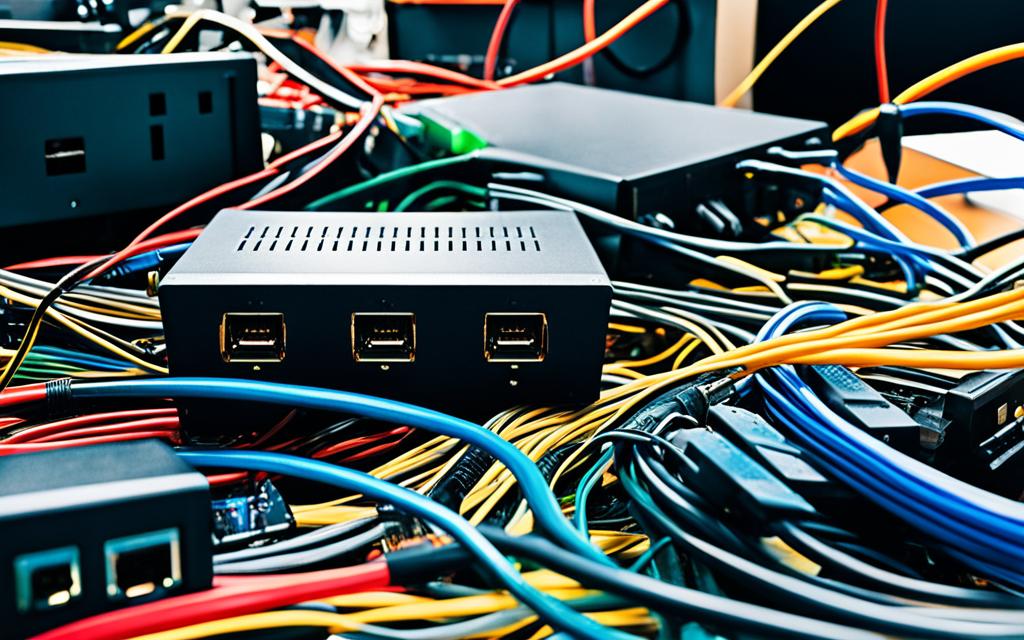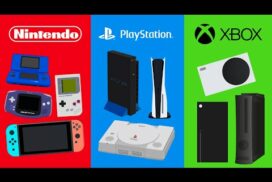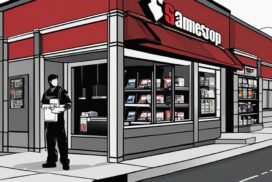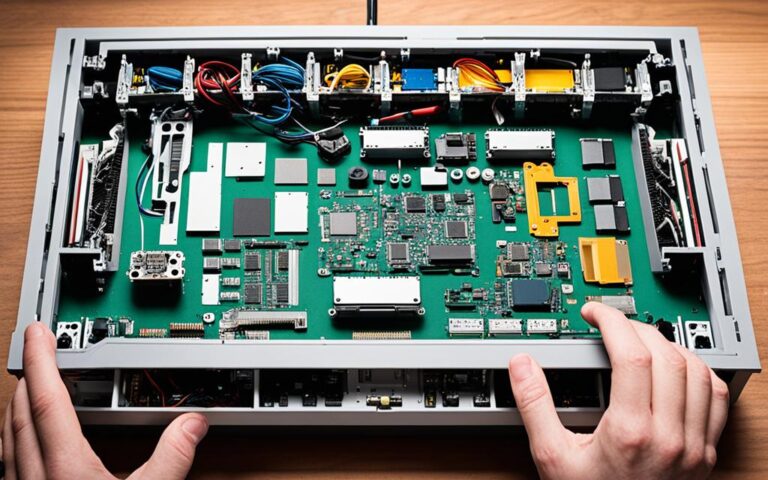Finding Console Hardware Solutions That Work
UK gamers looking to enhance their gaming setup with reliable console hardware solutions can benefit from expert advice and top-notch service. Finding the right solutions can be a game-changer, ensuring optimal performance and longevity for your beloved consoles. In this article, we will explore different sources and options to help you discover console hardware solutions that work. From Schematics and Boardviews for Gaming Consoles to FPGA-based Clone Systems, we will provide valuable insights and recommendations to meet your gaming needs.
Schematics and Boardviews for Gaming Consoles
Schematics and boardviews are valuable resources for technicians when repairing gaming consoles. While schematics can be relatively easy to find for older consoles like the PS3, boardviews are less common. However, there are individuals and websites that provide schematics and boardviews specifically for gaming consoles such as the Xbox One and PlayStation. These resources assist technicians in troubleshooting and diagnosing issues with consoles, offering insight into power supply problems and system failures.
When it comes to repairing gaming consoles, having access to schematics and boardviews can be crucial. Schematics provide detailed diagrams that outline the electrical connections and components within a console, helping technicians understand the inner workings of the device. Boardviews, on the other hand, provide a visual representation of the printed circuit board (PCB) layout, allowing technicians to identify and locate specific components.
By using schematics and boardviews, technicians can effectively troubleshoot and diagnose various issues with gaming consoles. For example, if a console is experiencing power supply problems, technicians can refer to the schematics to identify potential faulty components or connections. Similarly, if a console is failing to power on or experiencing system failures, the boardview can help pinpoint the areas where the problem may be occurring on the PCB.
“Schematics and boardviews play a crucial role in console repairs. They provide technicians with a roadmap of the console’s electrical and physical layout, allowing for efficient troubleshooting and repairs.” – Simon Lock, Retro Repair Specialist
Furthermore, schematics and boardviews can also aid in the modification and customization of gaming consoles. Technicians and enthusiasts can use these resources to understand the console’s architecture and make targeted hardware modifications or enhancements.
Example Schematic and Boardview:
| Schematic | Boardview |
|---|---|
These are just a few examples of how schematics and boardviews can be invaluable tools in console repairs and modifications. Whether you’re a technician or an avid console enthusiast, having access to these resources can greatly enhance your understanding and troubleshooting capabilities.
FPGA-based Clone Systems
FPGA-based clone systems have gained popularity among retro gaming enthusiasts. These systems, such as the Analogue Mega Sg, use Field-Programmable Gate Arrays (FPGAs) to replicate the performance of classic consoles like the Sega Mega Drive/Genesis. Unlike software emulation, FPGA emulation can provide near-indistinguishable performance from the original hardware, making it an enticing option for gamers.
With FPGA-based clone systems like the Analogue Mega Sg, players can experience their favorite retro games with the same precision and authenticity as playing on vintage hardware. Whether it’s the nostalgic visuals, distinctive sound effects, or the feel of the original controllers, FPGA-based clone systems aim to recreate the complete retro gaming experience.
One notable example of an FPGA-based clone system is the Analogue Mega Sg. This system boasts compatibility with a wide range of Sega game cartridges, providing access to a vast library of retro titles. With advanced features like HDMI output, multiple display options, and customizable audio settings, the Analogue Mega Sg offers a seamless and enhanced gaming experience.
When considering FPGA-based clone systems, it is important to acknowledge the gradual deterioration of vintage hardware and the potential incompatibilities that may arise. While these clone systems aim to faithfully replicate the original consoles, the aging components in vintage hardware may affect their performance and compatibility.
Furthermore, FPGA-based clone systems cannot completely eliminate the need for vintage hardware, as certain accessories and peripherals may still be required for the complete retro gaming experience. These systems primarily serve as a reliable alternative for gamers who don’t have access to or prefer not to use original vintage hardware.
In conclusion, FPGA-based clone systems like the Analogue Mega Sg offer retro gaming enthusiasts the opportunity to relive the nostalgia of classic consoles with modern convenience. While they provide an excellent alternative to vintage hardware, it is important to be aware of the limitations and potential compatibility issues. These clone systems should be seen as supplements rather than replacements for authentic vintage hardware.
| Pros of FPGA-based Clone Systems | Cons of FPGA-based Clone Systems |
|---|---|
|
|
Common Issues with Vintage Hardware
Vintage hardware, despite its nostalgic charm, is not impervious to deterioration and various issues. Several components and technologies commonly found in consoles from the late ’80s to mid-’90s can lead to problems and affect the overall functionality of these beloved retro gaming systems.
One particular concern is the use of surface mount technology in these consoles. Surface mount technology involves smaller components and soldering them directly to the surface of the printed circuit board, allowing for compact designs. However, this technology can pose challenges when it comes to the long-term reliability of certain components, such as electrolytic capacitors.
Electrolytic capacitors, often used in vintage consoles for power filtering and decoupling, are susceptible to degradation over time. They can deteriorate, leak, or even burst, damaging the printed circuit board and causing circuit breaks or shorts. Such issues can lead to power supply problems, system failures, or even permanent damage to the console.
Another common problem arises from the use of batteries in vintage consoles. Batteries are often utilized for various functions such as timekeeping or saving game data. However, over time, these batteries can wear out, lose their charge-holding capacity, or leak, resulting in incorrect functionality or complete system failure. It is crucial to check and replace batteries regularly to avoid potential issues.
Voltage regulators, especially the 7805-based linear regulators commonly employed in retro consoles, can also present problems. These regulators are responsible for providing stable voltage to various components within the system. When they fail, they can become unstable, causing voltage fluctuations that might strain and adversely affect other components in the console.
Optical media-based systems, such as CD-based consoles, have their own set of issues. These systems rely on moving parts like belts and tracking motors to read discs. Over time, these moving parts can wear out, resulting in difficulties reading or accessing game discs. Regular maintenance and proper handling of optical media-based consoles can help minimize these problems.
Component degradation, battery failures, and issues with voltage regulators and optical media systems are common challenges vintage hardware enthusiasts encounter. Understanding these issues is crucial to maintain and preserve the functionality of your retro gaming consoles.
Summary of Common Issues
| Issue | Description |
|---|---|
| Surface Mount Technology | Electrolytic capacitors can deteriorate, leak, and damage the printed circuit board. |
| Battery Failures | Over time, batteries can wear out, lose charge-holding capacity, or leak, resulting in incorrect functionality or system failure. |
| Voltage Regulator Problems | Failure of voltage regulators can cause instability and strain other components in the system. |
| Optical Media Issues | Moving parts like belts and tracking motors in optical media systems can wear out, leading to difficulties reading discs. |
Storage and Environmental Factors
Proper storage and consideration of environmental factors are essential for preserving vintage hardware. Retro consoles stored in attics, garages, or sheds can be susceptible to damage from heat and humidity, as well as potential infestations by insects or arachnids. Original external power supplies, even if provided by manufacturers, can also experience age-related component failure. It is important to maintain a suitable storage environment and ensure regular maintenance to mitigate these risks.
Protecting Your Vintage Hardware
When it comes to storing your retro consoles, it’s crucial to shield them from environmental conditions that could cause harm. Here are some tips:
- Choose a cool and dry location: Opt for a storage space that maintains a consistent temperature and humidity level. Extreme heat or cold, as well as high humidity, can accelerate the deterioration of your console.
- Avoid direct sunlight: Exposure to direct sunlight can lead to discoloration, warping, and other forms of damage to the console’s exterior.
- Use protective covers: Dust can accumulate and settle on your console over time, potentially blocking ventilation and causing overheating. Invest in console covers or use dust-proof sleeves to keep your hardware clean and protected.
- Keep away from moisture: Moisture is one of the primary enemies of vintage hardware. Ensure that your storage area is free from water leaks or excessive humidity. Consider using dehumidifiers or dampness-absorbing materials to control moisture levels.
- Prevent pest infestations: Insects, spiders, and rodents are attracted to warm and dark spaces, making your consoles an enticing hiding spot. Use pest control measures to safeguard your hardware and regularly inspect for any signs of infestation.
Dangers of Age-Related Component Failure
While original external power supplies may seem reliable, age can take its toll on their components. Over time, capacitors and other vital parts within the power supply can deteriorate, leading to malfunctions or complete failure. It’s important to be aware of this risk and take appropriate action to prevent potential damage to connected consoles. Regularly inspect power supplies for signs of wear and tear, such as bulging or leaking capacitors. If any issues are detected, it is advisable to replace the power supply with a new and compatible option to avoid damaging the consoles.
“Proper storage and environmental considerations are paramount when it comes to preserving vintage hardware. Failure to safeguard these cherished pieces of gaming history could result in irreversible damage and loss.” – Retro Gaming Enthusiast
By prioritizing the storage and maintenance of your retro consoles, you can enjoy their nostalgia and functionality for years to come. Taking the necessary steps to protect them from heat, humidity, and other environmental threats will help ensure the longevity of these beloved gaming artifacts.
Expert Repair and Maintenance Services
When facing issues with vintage hardware, seeking expert repair and maintenance services can be a worthwhile investment. Technicians like Simon Lock, known for their proficiency in retro repair jobs, specialize in repairing and resurrecting various consoles and systems. From Sega hardware like the Mega CD to Famicom Disk Systems, Lock has the expertise to diagnose and rectify problems that arise due to component failure, age, or design limitations. Trusted professionals like Lock can provide valuable solutions and ensure the longevity of your beloved retro consoles.
Lock, often referred to as a technological wizard, has garnered a reputation for his exceptional repair skills and comprehensive understanding of vintage gaming systems. With years of experience and a deep passion for retro gaming, he has become a go-to expert for console enthusiasts seeking reliable repair and maintenance services.
Whether your console is experiencing power issues, graphical glitches, or faulty controllers, Lock’s meticulous attention to detail and technical know-how enable him to diagnose and address a wide range of hardware problems. He utilizes state-of-the-art equipment and tools, combined with his extensive knowledge of vintage console architecture, to provide effective repair solutions.
“I’ve dedicated my career to restoring retro consoles to their former glory. Every repair job is a thrilling challenge for me, and I take immense pride in reviving these iconic gaming systems for their passionate owners.” – Simon Lock
Lock’s expertise goes beyond just restoring functionality. He also prioritizes preventive maintenance to ensure that your retro consoles remain in optimal condition for years to come. With regular cleaning, component replacements, and system checks, Lock’s maintenance services help prevent potential issues and extend the lifespan of your cherished gaming hardware.
The Benefits of Expert Repair and Maintenance Services by Simon Lock:
- Specialization in retro repair jobs
- Extensive experience with a variety of consoles and systems
- Comprehensive knowledge of vintage console architecture
- Meticulous attention to detail and technical expertise
- Utilization of state-of-the-art equipment and tools
- Preventive maintenance to extend the lifespan of your consoles
When it comes to preserving the nostalgia and functionality of your retro consoles, trusting an expert like Simon Lock ensures that your beloved gaming systems are in capable hands. From repairs to maintenance, Lock’s dedication to excellence and his passion for retro gaming guarantee top-notch service and reliable solutions for all your vintage hardware needs.
| Benefits of Expert Repair and Maintenance Services: | Simon Lock’s Specializations: |
|---|---|
| Specialization in retro repair jobs | Repairing and resurrecting various consoles and systems |
| Extensive experience with a variety of consoles and systems | Expertise in Sega hardware like the Mega CD and Famicom Disk Systems |
| Comprehensive knowledge of vintage console architecture | Diagnosing and rectifying problems due to component failure, age, or design limitations |
| Meticulous attention to detail and technical expertise | Providing effective repair solutions with state-of-the-art equipment and tools |
| Utilization of state-of-the-art equipment and tools | |
| Preventive maintenance to extend the lifespan of your consoles |
Conclusion
Finding console hardware solutions that work is crucial for enhancing your gaming setup and maintaining your retro consoles. By exploring reliable resources, seeking expert advice, and implementing proper maintenance measures, you can ensure the longevity and functionality of your beloved gaming collection.
One way to address hardware issues is by obtaining schematics and boardviews for specific consoles. These valuable resources can assist technicians in diagnosing and troubleshooting console problems, providing insights into power supply issues and system failures. Although boardviews may be less common, there are individuals and websites that offer these detailed diagrams for consoles like the Xbox One and PlayStation.
Alternatively, you can consider FPGA-based clone systems like the Analogue Mega Sg. These modern systems use FPGA technology to replicate the performance of classic consoles, offering near-indistinguishable gameplay experiences. However, it’s important to remember that even with these clone systems, vintage hardware can deteriorate over time, and potential incompatibilities may arise.
To maintain your retro consoles, it’s essential to be aware of common issues associated with vintage hardware. Problems such as electrolytic capacitor damage, battery failures, and issues with voltage regulators and moving parts can occur. Additionally, proper storage and consideration of environmental factors like heat and humidity are necessary to prevent damage to your consoles.
If you encounter issues beyond your expertise, seeking the assistance of an expert repair and maintenance service can provide invaluable solutions. Professionals like Simon Lock, renowned for their proficiency in retro repair jobs, have the expertise to diagnose and rectify problems caused by component failure, age, or design limitations. Their services can ensure the continued enjoyment and functionality of your retro consoles.
In conclusion, by utilizing reliable resources, seeking expert advice, and implementing proper maintenance techniques, you can find console hardware solutions that work and extend the lifespan of your retro consoles. Understanding common issues and considering factors like storage and maintenance are essential for preserving your gaming collection and ensuring continued gaming satisfaction.
FAQ
What are schematics and boardviews for gaming consoles?
Schematics and boardviews are valuable resources used when repairing gaming consoles. Schematics provide a visual representation of the circuitry and connections within a console, while boardviews show the specific layout of the printed circuit board. These resources help technicians troubleshoot and diagnose issues with consoles.
Are schematics and boardviews readily available for all gaming consoles?
Although schematics are relatively easy to find for older consoles like the PS3, boardviews are less common. However, there are individuals and websites that provide schematics and boardviews for specific gaming consoles, such as the Xbox One and PlayStation.
What are FPGA-based clone systems?
FPGA-based clone systems, such as the Analogue Mega Sg, use Field-Programmable Gate Arrays (FPGAs) to replicate the performance of classic consoles like the Sega Mega Drive/Genesis. These systems provide near-indistinguishable performance from the original hardware and have gained popularity among retro gaming enthusiasts.
What are the common issues associated with vintage hardware?
Vintage hardware can experience issues and deterioration over time. Surface mount technology, often found in consoles from the late ’80s to mid-’90s, can lead to problems with electrolytic capacitors. Batteries used for timekeeping or save data can also fail, and voltage regulators may become unstable. Optical media-based systems can experience wear and tear on moving parts, such as belts and tracking motors.
How should vintage hardware be stored to preserve its longevity?
Proper storage and consideration of environmental factors are essential for preserving vintage hardware. Consoles stored in attics, garages, or sheds can be susceptible to damage from heat and humidity, as well as potential infestations by insects or arachnids. Maintaining a suitable storage environment and regular maintenance can help mitigate these risks.
Where can I find expert repair and maintenance services for retro consoles?
When facing issues with vintage hardware, seeking expert repair and maintenance services can be a worthwhile investment. Technicians like Simon Lock, known for their proficiency in retro repair jobs, specialize in repairing and resurrecting various consoles and systems.
How can I find console hardware solutions that work for me?
Finding console hardware solutions involves exploring reliable resources, seeking expert advice, and taking necessary maintenance measures. Whether it’s obtaining schematics and boardviews for specific consoles or opting for FPGA-based clone systems, the goal is to enhance your gaming setup and extend the lifespan of your retro consoles.












